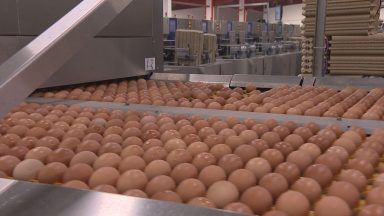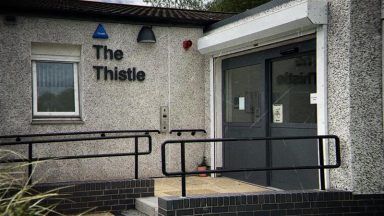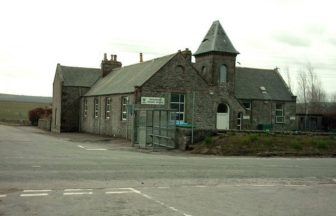After an hour of skimming through the silk-like water, a sea of sticks emerges on the horizon.
In the distance lies Scotland’s biggest offshore wind farm – now almost complete.
Seagreen, which sits 17 miles off the Angus coast, will generate enough energy to power two thirds of homes in Scotland.
Setting sail from Montrose Port in unusually calm conditions, we slowly get a real sense of the sheer size of the wind farm as we drew closer.
SSE Renewables say the turbines are twice the height of Big Ben and, while bobbing underneath these giant structures, it’s hard to argue.
There have been 104 turbines constructed so far – more than 70 are generating power – with just ten left to build before Seagreen is fully operational.
Robert Young, Seagreen site operations manager, joined us on the trip.
He said: “Seagreen offshore windfarm is the deepest fixed bottom windfarm anywhere in the world. It’s scale is vast.
“I don’t think it should be underestimated what 1.6 million homes being powered with clean energy will do for our push towards net zero.”
There is much to navigate to reach Scotland’s ambitious target of net zero by 2045.
As the country steers away from fossil fuels, authorities are rapidly turning to turbines to generate our power.
But will they help bring down sky high energy bills?
“Offshore wind has been a massive success in driving down cost,” said Sandie Lengden, Seagreen senior project manager. Ten, 15 years ago it was a pretty expensive source of power. Now it’s one of the most cost-effective methods of generating power.
“Green energy at cost effective prices will, in the medium term, drive down our reliance on expensive and polluting fossil fuels and that should feed through to people’s bills.”
Much of the technology used for decades to extract fossil fuels is now helping to grow this greener source of power.
After five years working in oil and gas, Chay Ross has made the move to renewables as he believes that is where a brighter future lies.
He is on SSE’s graduate programme, which is training a new generation in new energy.
“The progression there is in offshore wind right now is unrivalled by any industry and looking at the prospects for new people coming in and especially someone like myself coming from the Highlands of Scotland I thought there was a lot of opportunities here,” said Ross.
Robert Young, site operations manager, believes attracting skilled workers from oil and gas is crucial to the transition to renewables.
“It’s a transition that needs to happen. There’s a lot of people out there with a lot of transferrable skills that we can use in this industry,” said Young.
“Seagreen is a project that is pioneering and at the cutting edge of what we’re doing as an industry, there’s going to be others to follow.”
The power generated from each turbine will be transferred to the nearby sub station platform.
Three subsea cables transport the energy to shore at Tealing near Dundee, where it’s then sent to the national grid and into our homes.
There have been 400 jobs created during construction of the £3bn development and once fully commissioned, 80 full time staff will be based at the Seagreen operations and maintenance base in Montrose.
The turbines’ foundations were assembled at the Port of Nigg on the Cromarty Firth.
Sailing around Seagreen was smooth and calm, but the path away from oil and gas will be more choppy.
Keeping the lights on and keeping people in jobs is the tricky challenge, as the transition to grow greener energy moves up a gear.
Many argue the industry needs to pick up pace if we’re to win the environmental race, while protecting people from expensive power.
Follow STV News on WhatsApp
Scan the QR code on your mobile device for all the latest news from around the country
























